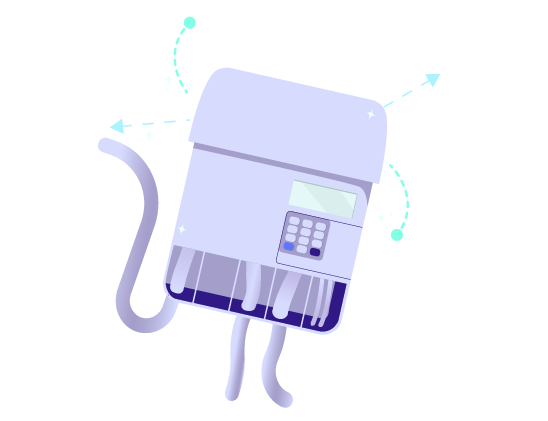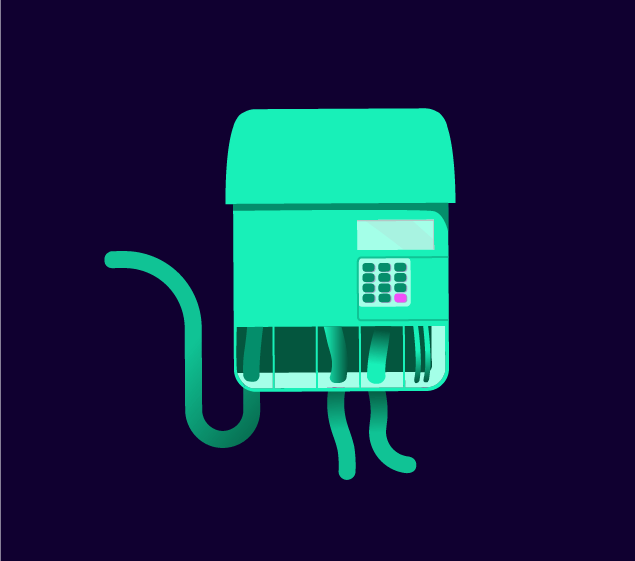SMETS1 vs SMETS2: Why the Upgrade Matters
We're upgrading old SMETS1 smart meters to the newer SMETS2 models - and that’s good news for you.
S2 meters are reliable, secure, and stay smart even if you decide to switch energy suppliers. You’ll still get automatic readings, more accurate bills, and better energy tracking - all without lifting a finger.
Wondering why we’re making the upgrade - or what the difference actually is? Don’t worry, we’ve got you covered. All the answers are just below!
According to the Department for Energy Security and Net Zero (DESNZ), there were around 40 million smart meters in homes and small businesses across Great Britain at the end of June 2025. This will be a mix of SMETS1 (first-generation) and SMETS2 (second-generation) smart meters, of which there are varying models by multiple manufacturers.
We’re now replacing SMETS1 meters with the newer models - the SMETS2.
Why are we upgrading SMETS1 smart meters with the new SMETS2 meters?
All smart meters have a communications hub. It’s usually located on top of your electricity smart meter or, in some cases, beside it. These hubs enable your smart meter to share data with your In-Home Display (IHD) and us, your supplier, via secure networks managed by the Data Communications Company (DCC). All comms hubs installed until recently were built on 2G and 3G cellular signals in the South and a long-range radio network in the North.
The government has announced the gradual phase-out or ‘sunsetting’ of the 2G/3G mobile networks. This ensures the UK is prepared for future technologies on 4G and beyond.
This means smart meters in the South with 2G and 3G communications hubs will be directly affected, and no longer function as smart after the full switch off in 2033.
The solution is an upgraded 4G smart meter network with brand new 4G communication hubs for all smart meters.

We, as suppliers, need to upgrade your existing communications hub to the new 4G network now.
This also applies to customers in the North, who, although not currently at risk of losing smart functionality, will benefit from more reliable and consistent coverage provided by the new 4G communications hub. This also ensures they are future-ready for further changes on the smart meter network.
Replacing the comms hub seems straightforward; however, we encounter roadblocks with the first generation of smart meters (SMETS1). These have a fully integrated 2G comms hub that cannot be upgraded. To benefit from the new 4G comms hub, we will need to replace these with a fully future-proofed SMETS2 meter.
According to DESNZ, at the end of 2024 there were 14 million SMETS1 meters in the UK. This means we need to act now, and upgrade these meters to be compatible with the new 4G network by 2G/3G switch off at the end of 2033.
SMETS2 smart meters that still have a 2G/3G hub are set to be fitted with a 4G hub as soon as possible and at no extra cost.
What are the main differences between SMETS1 and SMETS2?

SMETS1 meters were rolled out in 2012 and are the older version of the new and improved SMETS2 models, which have been the standard since 2018.
As discussed, a significant difference is that SMETS2 smart meters can be upgraded with a new and shiny 4G comms hub (if not already installed with one).
Both types of smart meters automate the way your energy usage is recorded and shared with your supplier, but there are more differences than you may think:
Network and switching suppliers:
SMETS2 meters are connected via a single and secure digital network. It’s run by the Data Communications Company (DCC) and overseen by the energy regulator Ofgem. This means it must comply with strict regulations to ensure smart meter data is kept private and secure. This smart meter network links all major energy suppliers across the UK, meaning that customers with SMETS2 meters can move seamlessly between suppliers without losing smart functionality.
While on this network, SMETS2 meters can send and receive over 150 types of messages, including meter readings, service firmware updates and upgrades. This makes them ideally placed for changes in the energy grid.
They are also compatible with the rollout of the new 4G communication hubs, which are the answer to the government's gradual phase-out of the 2G/3G networks.
SMETS1 meters, when installed, only communicated with the supplier who installed them and shared data directly with them. Over the last few years, SMETS1 meters have been gradually enrolled onto the DCC network to improve their connectivity. However, with their older software, they benefit from fewer firmware upgrades compared to their SMETS2 counterparts and are more limited in their features.
SMETS1 meters that have not been enrolled on the DCC network often go into ’non-smart mode' when switching suppliers. This means you will need to submit manual readings. These meters will need to be upgraded to a brand new SMETS2 meter.
Future-proofed for a flexible smart grid:
As mentioned, SMETS2 smart meters are connected via a nationwide network run by the DCC. We all know the future of energy relies on utilising renewable energy sources such as solar panels and wind turbines. It is therefore essential to have a smart energy network which can communicate efficiently across the UK and respond to the needs of the grid.
This network allows for regular remote upgrades and is future-proofed for changes in the grid.
Aside from the obvious issue of having integrated 2G communication hubs, we know that SMETS1 smart meters also have a more limited ability to receive remote updates and requests due to their older software. The creation of a growing number of smart tariffs, schemes, and time-of-use trials necessitates technology that can dynamically respond to grid changes. SMETS2 are perfectly prepped to allow customers access to the best money-saving and planet-friendly smart products—a win-win for you and us.
Compatible with the smart home:
SMETS2 meters are designed to work seamlessly with modern energy systems, including smart tariffs and smart home tech such as batteries, wind turbines, solar panels and electric cars.
The 4G network ensures that customers can benefit from this tech beyond the 2G/3G switch-off. This extends to things like smart thermostats (Nest, Hive, etc.), smart plugs and appliances and home automation platforms (like SmartThings).
SMETS1 vs SMETS2: At a glance
| Feature | Non-DCC network enrolled SMETS1 | DCC network enrolled SMETS1 | SMETS2 |
|---|---|---|---|
| Smart after supplier switch | Will go into non-smart mode | Will likely stay smart | Stays smart |
| Network | Regional/private networks (SIM card) | National DCC network | National DCC network |
| Remote upgrades | Limited capacity | Supports limited requests | Fully supported |
| Future-proofed | Not future-proofed | Not future-proofed | Built to be flexible with the grid |
| Smart home tech and tariffs | Limited | Limited | Built for next-gen energy systems |
FAQs
Are SMETS1 smart meters still being installed?
No, SMETS1 smart meters are no longer being installed. We are only installing SMETS2 meters.
What type of smart meter is mine, SMETS1 or SMETS2
If you're already supplied by us, you can check which meter you have by logging in to your online account dashboard.
You can also take a look at the Smart Meter Check Tool.
When will I be able to upgrade my SMETS1 meter?
We'll be in touch to book you in for your meter upgrade as soon as we have engineers available in your area.
If I have a SMETS1, will my IHD still work with a new SMETS2?
In most cases, display screens for S1 meters are not compatible with your new S2 meter.
We'll provide you with a new device that works with the new meter, either a device you can view on an app or a screen, depending on your preference. This could be an In-Home Display (IHD) or our nifty Octopus Home Mini.
What if I don’t have a smart meter?
It couldn’t be easier to get a smart meter. We release thousands of new appointments every week.
Once you've registered your interest, we'll send you an email when we have appointments available in your area.
You can also head to your online account to get booked in - you'll need to choose a date and time that works for you, and we'll sort the rest!
Published on 26th September 2025 by:
Hey I'm Constantine, welcome to Octopus Energy!
×Close window

